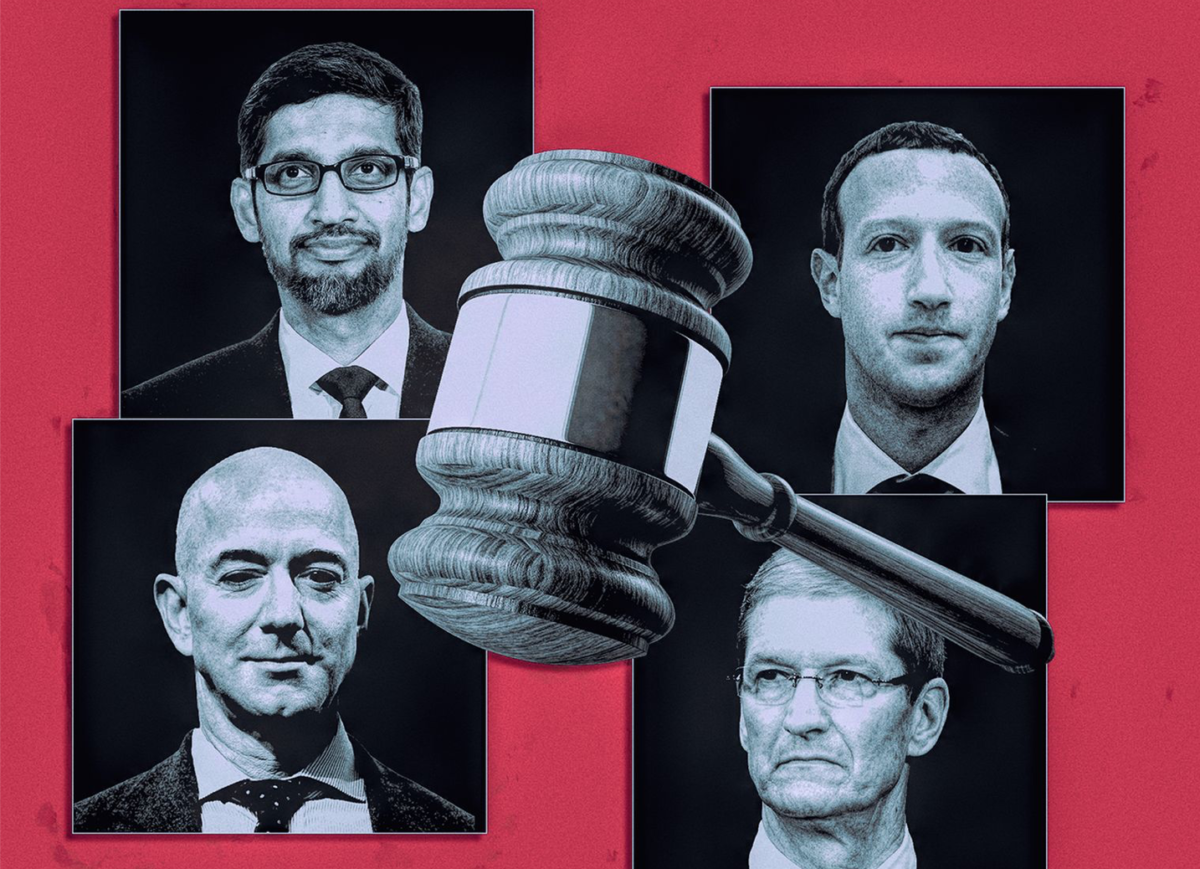The four tech-giant CEO’s Tim Cook, Jeff Bezos, Mark Zuckerberg and Sundar Pichai face increasing criticism from US Congress and governors stating that these tech-companies are growing their dominance in the market. Apple, Facebook, Amazon and Google are accused of boosting their powers by acquiring small start-up companies and by using competitor’s data for their own sale promotions etc. This conversation has been going in Europe as well and these four companies are being accused for exerting monopolistic behavior in their respective markets. (Lapienytė, 2020)
There is a growing concern about the power that these companies have, and customers as well as small emerging companies are filing complaints against these giant tech-companies because of their increasing dominance in the tech market. Because of this, on July 19th , the 4 CEO’s had do defend their companies in a hearing with US lawmakers (Kelly, 2020). These lawmakers have been investigating these companies and have gathered 1.3 million documents to defend their cases (Kelly, 2020).
At the end of the hearing, the committee will publish a report in the coming months explaining how the CEO’s companies have been avoiding liability under the current anti-trust laws because those rules of competition were never made with the tech’s behaviors in mind back then (Kelly, 2020). While this is the first hearing with those 4 tech-giants together, it is certainly not going to be the last. Hopefully, this is only the beginning for more regulatory or legislative action, which is needed and strongly supported by the Democrats in the US.
But what are these tech-giants accused of?
Facebook was mostly accused because of its acquisition of social media apps such as Instagram and WhatsApp. These acquisitions helped Facebook have a strong position in the advertising market. Amazon is accused of gathering data from small businesses to strategize their products offered on their platform. Google is accused of promoting their own products over competition in the online search engine, and is also dominating the online advertising industry. Apple is accused of intentionally disadvantaging competing apps in the Apple store over its own products. (Lapienytė, 2020)
Do you think there will be more laws and regulations coming in the future concerning the monopolistic behavior of some tech-giants, and how do you think these will affect the above mentioned companies?
References
Kelly, M., 2020. Big Tech Is Going On Trial. [online] The Verge. Available at
<https://www.theverge.com/2020/7/28/21344920/big-tech-ceo-antitrust-hearing-apple-facebook-amazon-google-facebook> [Accessed 28 September 2020].
Lapienytė, J., 2020. Four Of The Most Powerful Tech Ceos To Defend Against Accusations
Of Monopoly | Cybernews. [online] CyberNews. Available at: <https://cybernews.com/news/four-of-the-most-powerful-tech-ceos-to-defend-against-accusations-of-monopoly/> [Accessed 28 September 2020].


